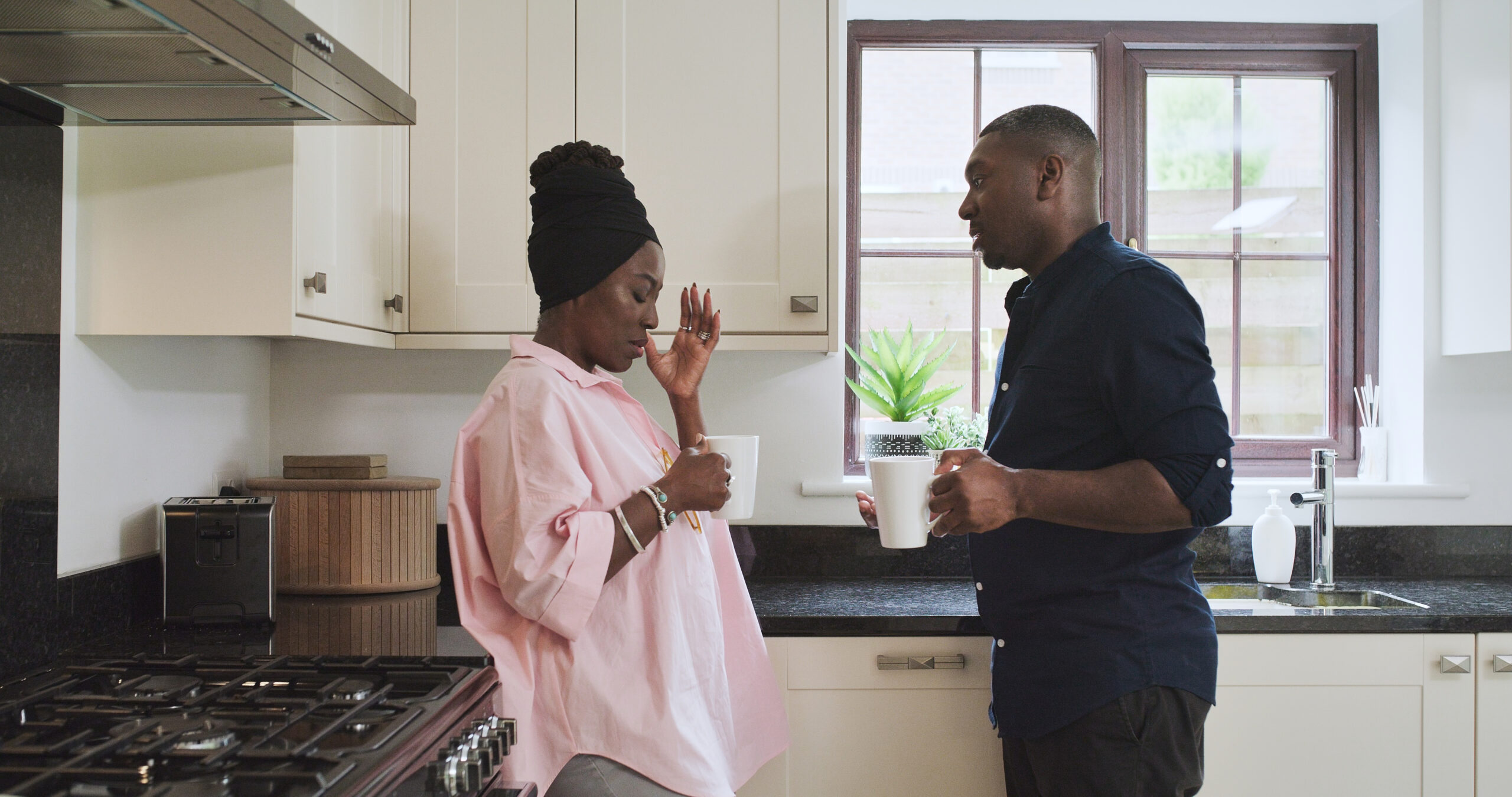It is possible to have healthy disagreements with your partner. While at times it might seem like an uphill battle, a couple can actually learn to disagree better. It starts by learning to improve communication skills and your understanding of nonverbal cues.
Hannah Townsend is an Atlanta-based sex and relationship therapist with a background in Marriage and Family Therapy. She is a part of the Atlanta Therapeutic Collective and is passionate about helping clients work through intimacy issues, childhood trauma, relational discord, and more.
Towsend emphasizes the importance of body language and nonverbal cues when it comes to creating a healthy connection with your partner. The starting point is acknowledging nonverbal causes. Then, a couple must incorporate both verbal communication and meta-communication to better express their viewpoints, address issues, and find mutually acceptable solutions.
“By incorporating these strategies, couples can navigate disagreements healthily and constructively,” she said. “This will help them foster a deeper connection – building trust, empathy, and intimacy in the relationship.”
Townsend says there are a few strategies couples can use to ensure their disagreements are constructive while using nonverbal cues healthily.
Use “I” Statements
Keep the focus on the present moment by using “I” statements. This also encourages expression of your feelings, wants, and needs without being accusatory or blaming your partner. Body language such as touching your chest or pointing at yourself can identify ownership of how you feel.
For example, one partner might say, “I feel the tension in my chest when you interrupt me speaking because it communicates to me that you are not present with me. I need for you to be present with me through actively hearing me.” This is an alternative to statements like, “You always make me feel angry by cutting me off.”
Take Breaks During Disagreements
When you and/or your partner’s emotions escalate, take a break. This ensures that you and/or your partner are not simply listening to respond, but listening to understand. Breaks also help ensure you and your partner are mentally present with each other. Then, resume the conversation when your thoughts are gathered, you feel emotionally regulated, and you’re ready to give and receive full engagement with your partner.
Practice Respect
When it comes to verbal language during disagreements, you should avoid disrespectful behaviors like name-calling and sarcasm. When it comes to nonverbal communication, stay calm and self-reflective. Maintain a clear sense of self while remaining connected to your partner through calm body language and appropriate physical space. This helps to reduce anxiety and promote self-regulation which decreases reactivity.
For example, one partner, while maintaining a calm tone and open posture, might say, “I understand this is stressful. Let’s figure this out together without blaming each other.”
Mirror Body Language
Use techniques like “mirroring,” where partners repeat back what they heard to ensure understanding. This fosters empathy and connection. Mirror each other’s body language to enhance empathy and understanding.
Promote a Secure Attachment
Identifying and expressing underlying emotions during disagreements to promote secure attachment and understanding. For example, one partner says, “I feel scared when we argue like this. Can we take a moment to breathe and talk about what’s bothering us?”
Respond with a soothing touch. Maintain soft eye contact, listen deeply, and validate each other’s feelings to foster emotional safety. These nonverbal actions communicate that you are engaged and able to provide reassurance.
Set “Disagreement Times”
Setting a time for heated discussions might seem odd, but it can be an effective tool to healthy disagreements. Establish rules for disagreements, such as no interrupting, no raised voices, and raising a hand to indicate the need to speak without interrupting.
In contrast, schedule time for the couple to connect each week without distractions. Use deliberate nonverbal actions, like pausing and making direct eye contact, to emphasize the importance of connecting with your partner.
Create a Safe Space
Use nurturing gestures, like holding hands to create a sense of safety and reassurance and address nonverbal signs of defense mechanisms. For example, one partner might say, “I think I’m projecting my fears onto you. Let’s try to understand what’s causing these feelings.”
Respond with empathetic body language, like leaning in and maintaining eye contact. This enhances empathy for awareness and reduces the use of defense mechanisms like projection and denial during conflicts.
Encouraging Equal, Open, Respectful Communication
This is the type of communication where both partners contribute to finding solutions. For example, one partner might say, “How do you see our disagreement about chores? Let’s talk about it and find a solution together.” They might show openness through a relaxed posture and attentive listening, indicating a willingness to create understanding.
Use body language that conveys respect and equality, such as equal seating when speaking with one another. When discussing differing perspectives, respond with an open, receptive stance and positive facial expressions.
